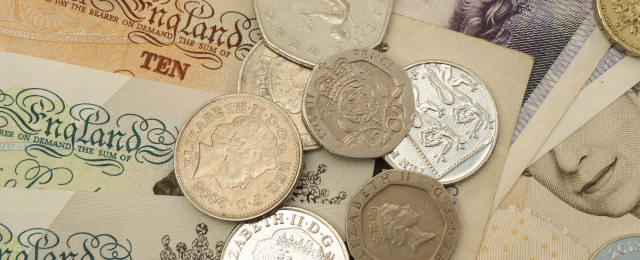Gross debt matters as this is what an independent Scotland would have to issue to finance its obligations. However, a negotiated settlement would allow Scotland to meet its debt obligations over a relatively long period, and the necessity of immediately issuing debt would be minimised.
Scottish First Minister Salmond has stated that he would repudiate Scotland’s share of the UK national debt if there is no monetary union with sterling in the wake of independence, and has said that Scotland’s “plan B” for its currency (absent monetary union) could include sterlingisation or a currency peg. Both these options would require an independent Scotland to issue large amounts of debt almost immediately. This is because an independent Scotland would have to hold sterling reserves of a large enough size to convince markets of its financial system and or currency stability.
The debt burden of sterlingisation: 41% GDP (minimum)
Sterlingisation would be an unusual option for an independent Scotland as most similar regimes are run by countries that are political dependencies of the anchor country, and have populations of less than 1 million. Using the precedents that best fit an independent Scotland (El Salvador and Ecuador), we can estimate the required size of reserves Scotland would need to raise to convince markets that Scotland could provide a lender-of-last-resort function to its remaining banking sector after independence. This gives, as a minimum estimate, a gross debt burden of 41% of GDP that would have to be raised very quickly.
The debt burden of a currency peg: 58% GDP (minimum)
A currency peg would be a more conventional option for a country of Scotland’s size that does not wish to be a dependency. A currency peg would allow the creation of an independent Scottish currency, tied to sterling. The independent Scottish government would need to hold sufficient reserves as to convince markets that it could bail out its banks as needed, and maintain the currency peg. This gives, as a minimum estimate, a gross debt burden of 58% of GDP. This would also need to be raised very quickly.
Managing the debt burden
The estimates given for Scotland’s starting debt burden under an Independence scenario can only be approximations. The strength of the Scottish economy in the interregnum between the referendum and independence being granted would be uncertain, and the independent Scottish government’s fiscal reaction to the consequences of constrained Scottish credit over this period would also have a bearing on the debt. These estimates should be considered conservative forecasts. An
independent Scotland would face a clear choice between a larger public-sector debt burden, with lower funding costs and longer to finance it, or a smaller public debt burden with higher funding costs (because of the default risk premium) and an urgency to the financing time frame. Scotland may have options to try and lower its debt funding costs if it has repudiated its share of the UK national debt after independence, including securitising oil-related revenues and capital controls. Both such measures carry risks.






Be the first to comment on "Scotland’s starting debt"